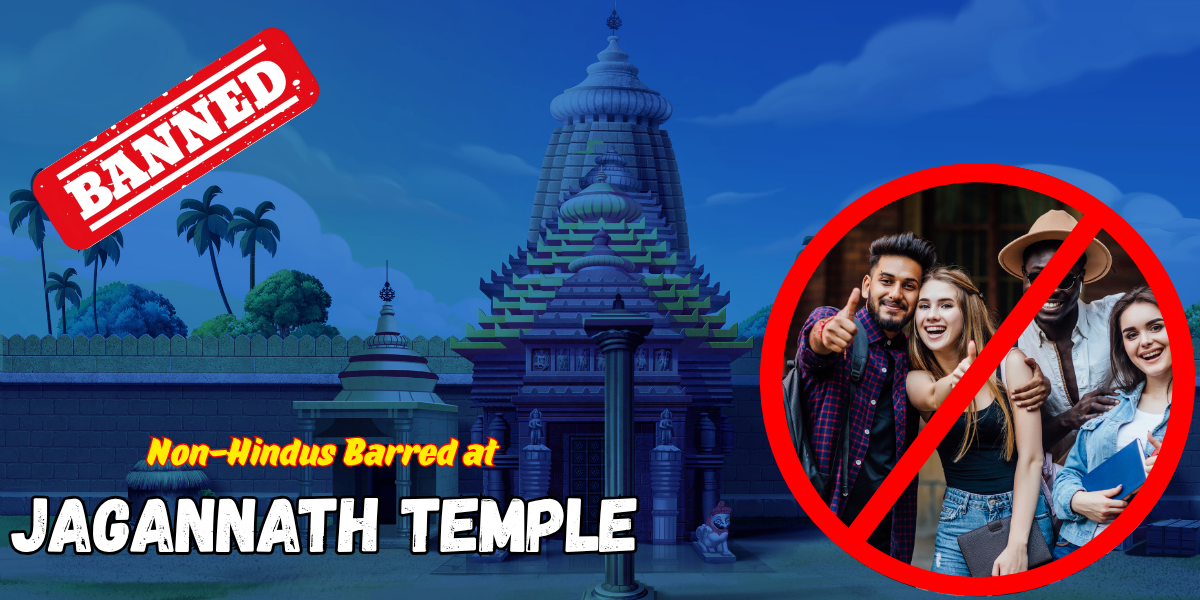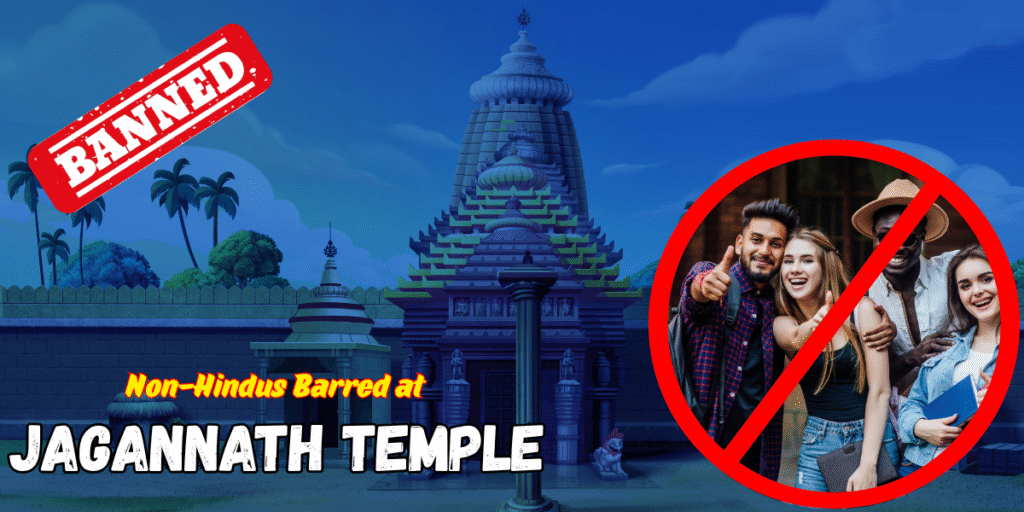
Foreigners and Non-Hindus Cannot Enter the Jagannath Temple?
- Unveiling the Reasons Behind This Ancient Tradition
- What Is the Rule Exactly?
- Historical and Scriptural Foundations
- The Role of the Gajapati King and Servitors
- Jagannath: The Most Inclusive God with an Exclusive Entry?
- The Issue of Reform: Debate Still Continues
- What Can Foreigners and Non-Hindus Do Instead?
- Final Thoughts: A Matter of Respect, Not Rejection
Unveiling the Reasons Behind This Ancient Tradition
Non-Hindus Cannot Enter the Jagannath Temple. In a world that is becoming increasingly interconnected and spiritually curious, one rule at the revered Jagannath Temple in Puri often surprises visitors—foreigners and non-Hindus are not permitted to enter the temple premises. At first glance, it may seem exclusionary, even controversial. But to truly understand this practice, one must go beyond the surface, into the heart of centuries-old spiritual customs, sacred beliefs, and the deep ethos of Lord Jagannath’s tradition.

What Is the Rule Exactly?
At the Jagannath Temple, only practicing Hindus, Jains, Buddhists, and Sikhs—who accept the Vedas as part of their tradition—are allowed entry. People of Abrahamic faiths (like Christianity, Islam, Judaism), or atheists, agnostics, and even foreign-born converts are usually denied access.
Non-Hindus Cannot Enter the Jagannath Temple. Even notable personalities like Indira Gandhi (then PM) and Iskcon devotees, who held deep reverence for Lord Jagannath, were denied entry at various points due to this rule.
Historical and Scriptural Foundations
The restriction is not based on modern politics but on historical precedence and religious codes. The temple follows the Purusottama Kshetra Mahatmya, which describes Puri as a highly sacred and sensitive spiritual zone. According to this tradition:
-
Puri is not just a temple town—it is a living divine realm.
-
Lord Jagannath is considered a king and a living deity, and His home must be protected with utmost sanctity.
-
The priests believe that if certain rituals are violated (even unknowingly), it can spiritually disturb the deity, requiring lengthy and complex purification rituals.
The ritual purity rules followed here are not discriminatory in intention, but rather serve the temple’s commitment to upholding the divine protocol (Agama Shastra) that governs every aspect of temple life—from the timing of food offerings to the specific way flowers must be arranged.
The Role of the Gajapati King and Servitors
The Gajapati Maharaj, considered the foremost servitor of Lord Jagannath, upholds these customs strictly. The Chhatisha Niyog (36 categories of temple servitors) have the responsibility to maintain the sanctity of temple spaces, which includes restricting access based on religious qualification, not racial or national identity.
There is no racial bias—for example, a white-skinned foreigner who is a devout Hindu and accepts the Vedas might be allowed entry upon approval. On the other hand, an Indian citizen who does not practice Hinduism is denied entry.
Jagannath: The Most Inclusive God with an Exclusive Entry?
This is where the divine paradox of Lord Jagannath lies. He is perhaps the most accessible deity in terms of emotion, love, and public connection:
-
Rath Yatra is celebrated in open streets where everyone, regardless of religion or caste, can touch the chariots and feel connected to the Lord.
-
Lord Jagannath accepts food offered by devotees from all castes, breaking the age-old social barriers.
-
His form itself—without hands or feet, with large round eyes—is symbolic of universal acceptance, representing all.
Yet, within His temple, strict sanctity rules are followed, not out of exclusion, but out of deep ritualistic discipline.
The Issue of Reform: Debate Still Continues
There have been legal petitions, media debates, and activist movements urging for changes in temple policy. Some argue that:
-
It goes against the secular spirit of India.
-
It’s time to open doors to seekers of all backgrounds in today’s spiritual globalism.
-
Other major temples, like Meenakshi Temple (Madurai) or Kashi Vishwanath, allow foreigners inside.
However, the Supreme Court of India, while acknowledging the concerns, has also respected the autonomy of religious institutions to manage their affairs, as per Article 26 of the Constitution.
The matter remains sensitive, balancing between devotion, tradition, law, and public sentiment.
What Can Foreigners and Non-Hindus Do Instead?
Though they may not enter the temple, seekers can still:
-
Visit the nearby rooftop view-point to witness the grand temple complex.
-
Participate in the Rath Yatra, especially during the Bahuda Yatra when Lord Jagannath returns to His abode.
-
Visit the Gundicha Temple, where Lord stays during the chariot festival.
-
Seek blessings at Jagannath temples across India and abroad (Iskcon temples are open to all).
-
Experience the Mahaprasad (Abhada Bhog), which is considered sacred and is available to all at Ananda Bazaar.
Final Thoughts: A Matter of Respect, Not Rejection
The Jagannath Temple’s restriction on non-Hindus entering the sanctum is a matter of spiritual discipline, not discrimination. It reminds us that spirituality in India is deeply rooted in tradition, where some spaces are treated as divinely intimate, like the inner sanctum of a mother’s womb—sacred, protected, and not for public display.
Instead of seeing this rule as a wall, one can see it as a boundary drawn out of reverence, not rejection. After all, Lord Jagannath lives in the heart of the devotee, and no wall or gate can restrict true devotion.


Leave a reply here
Your email address will not be published. Required fields are marked *